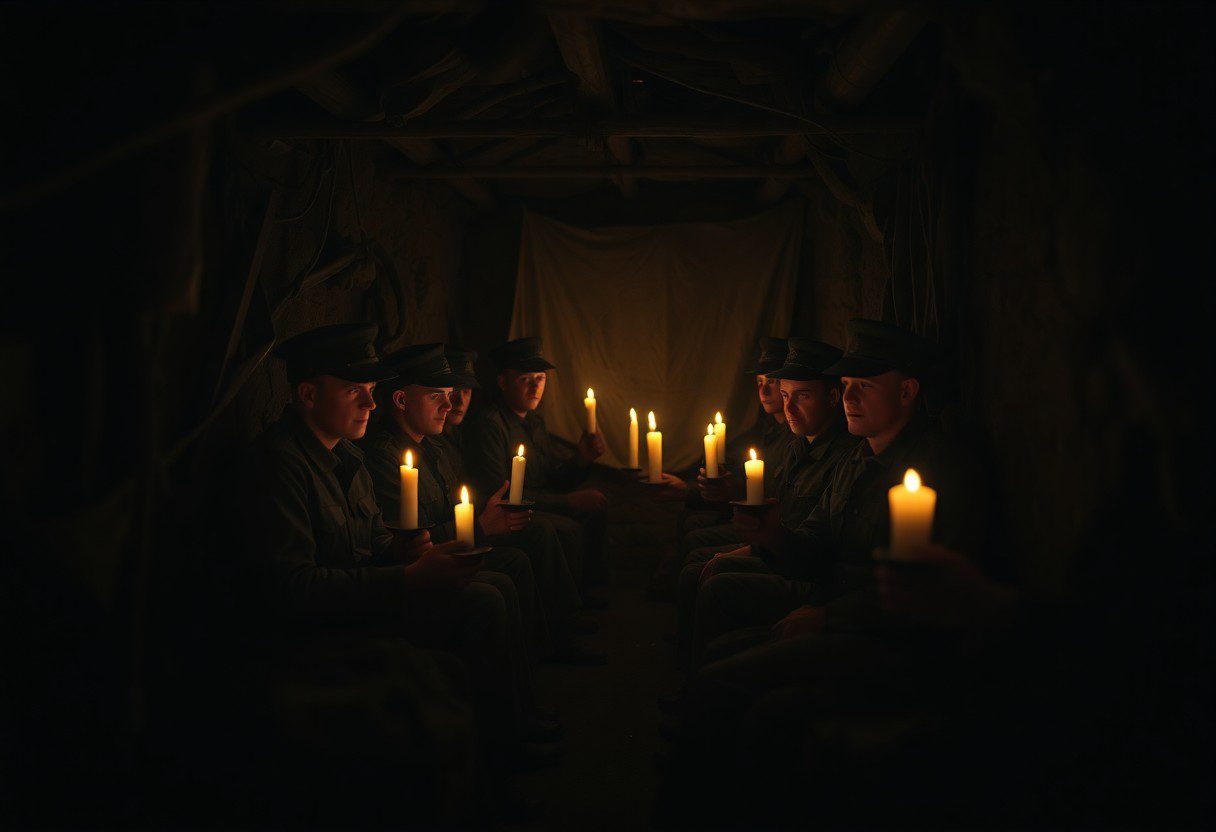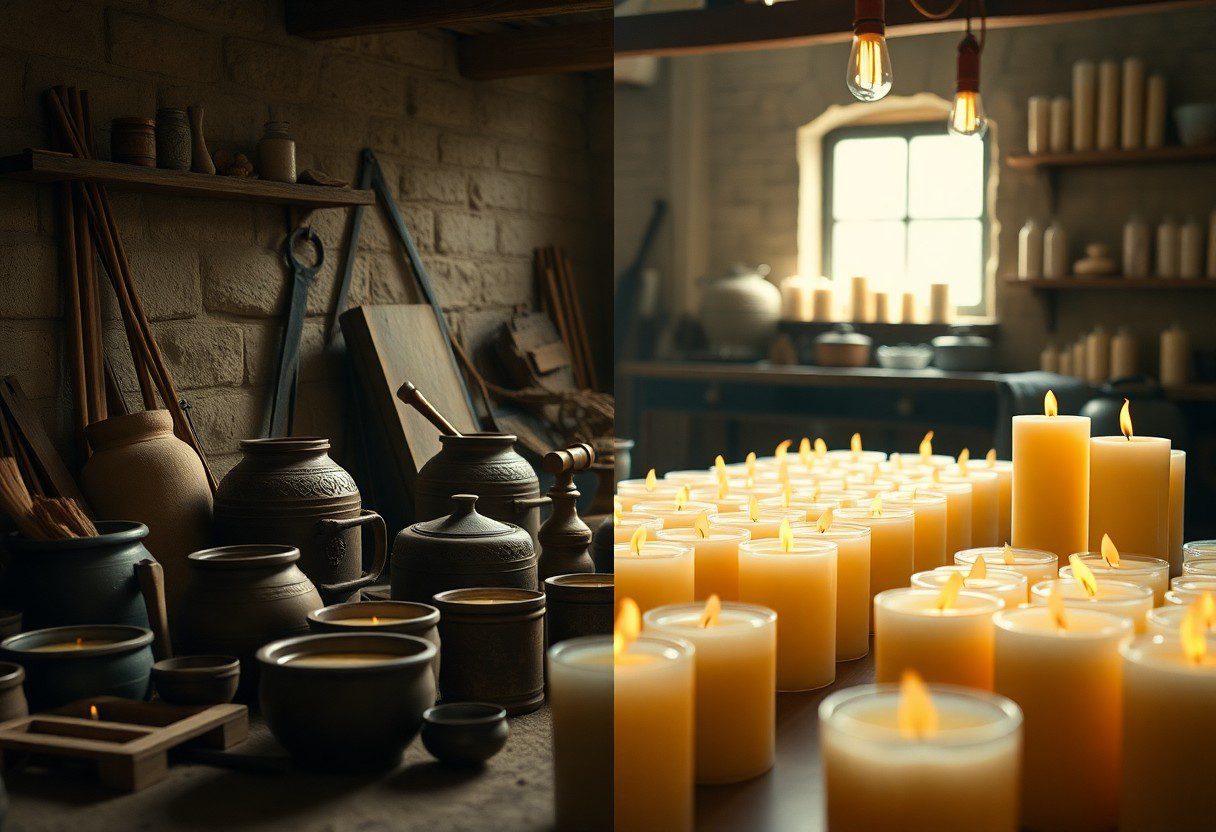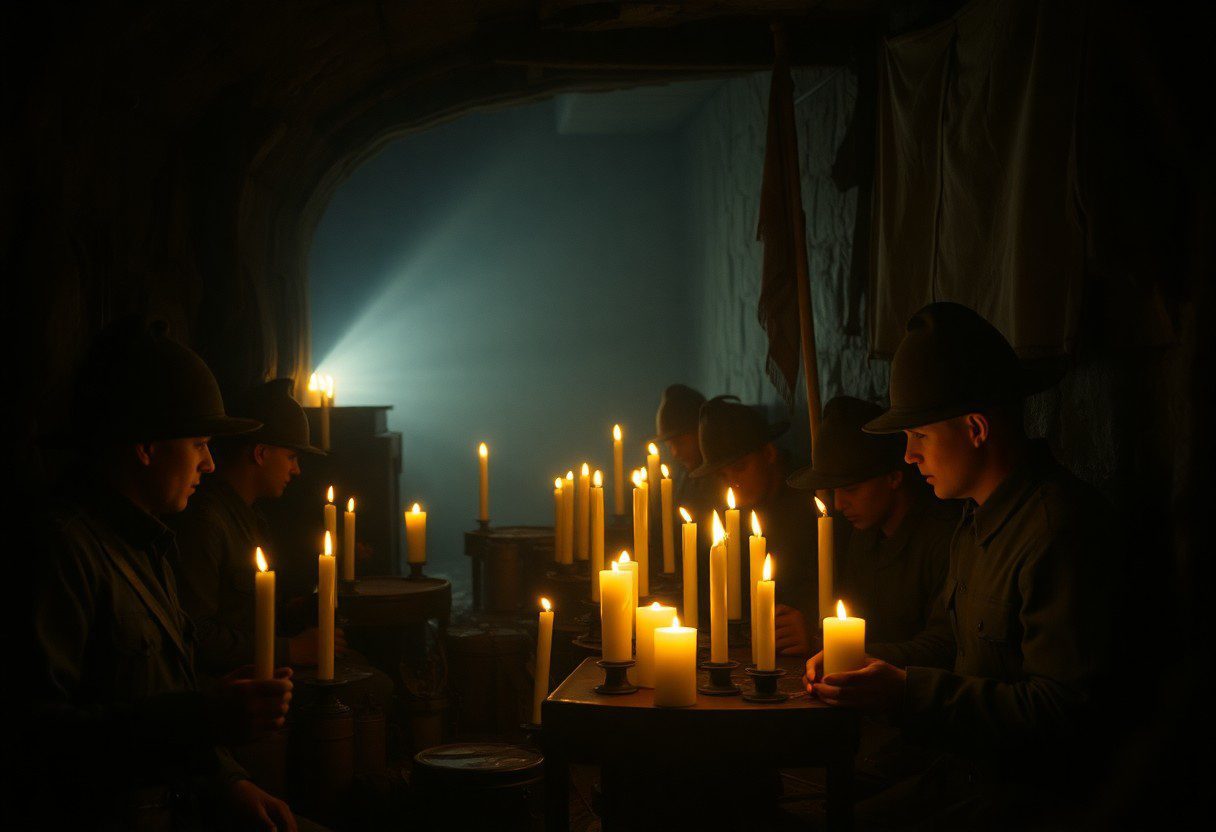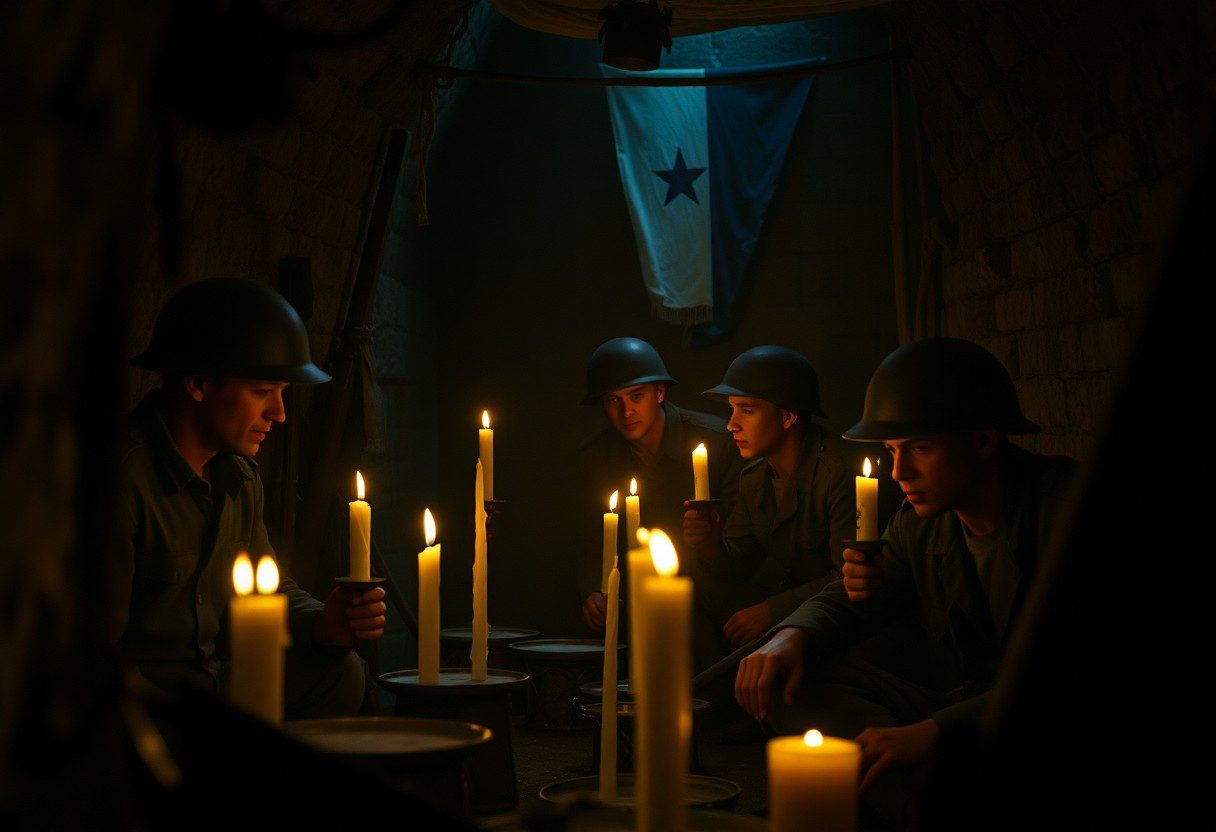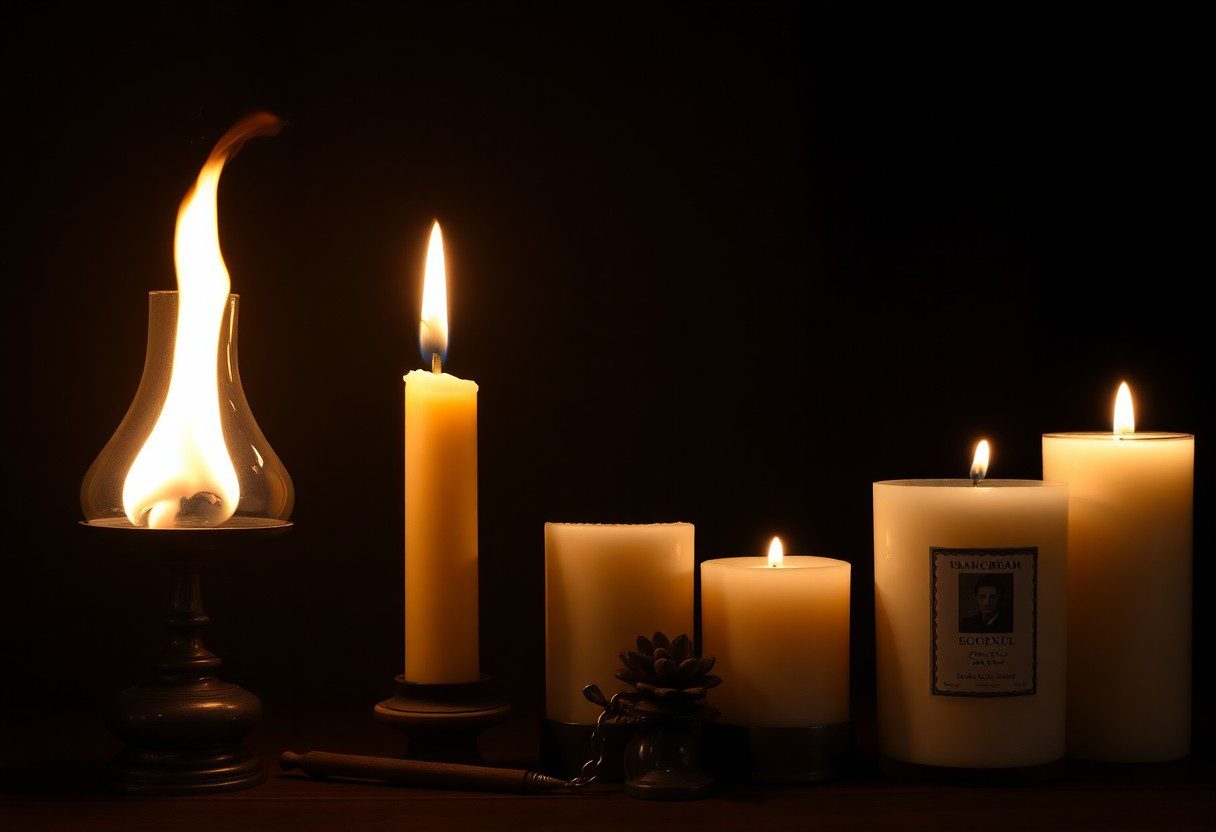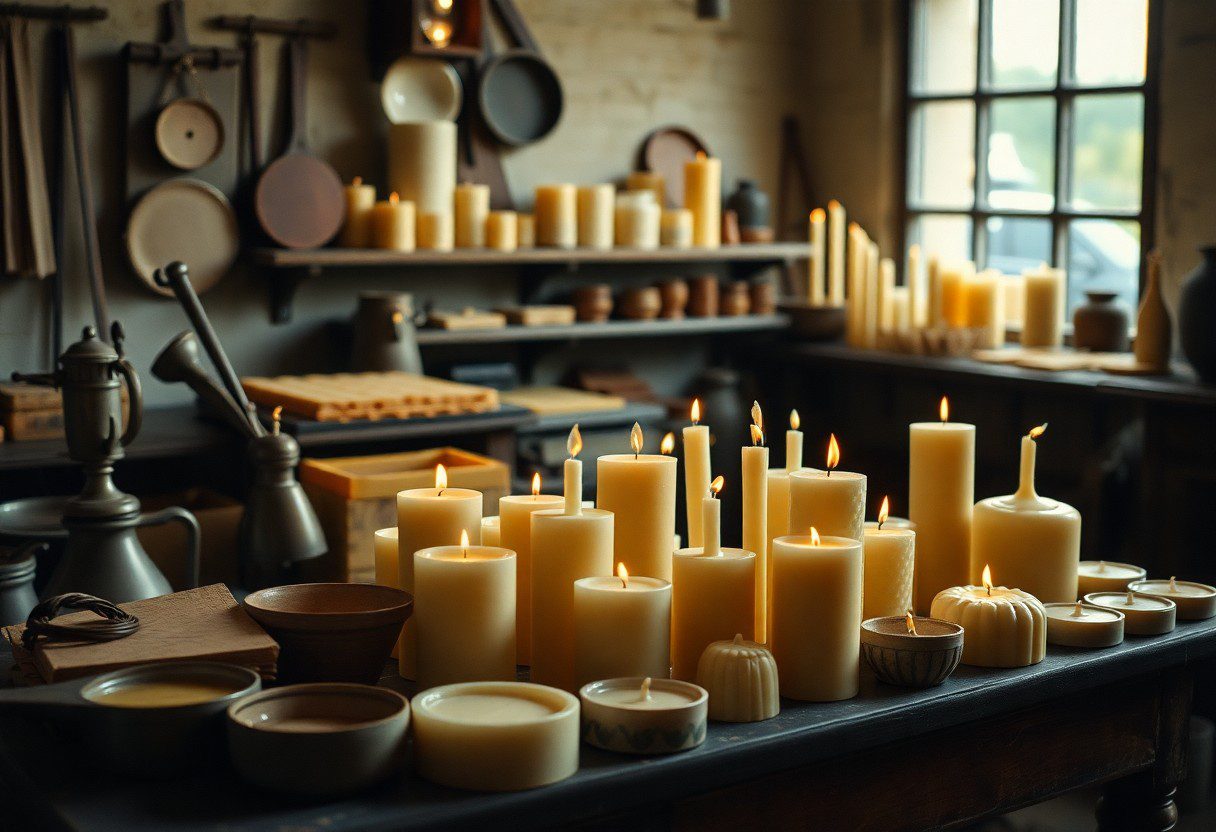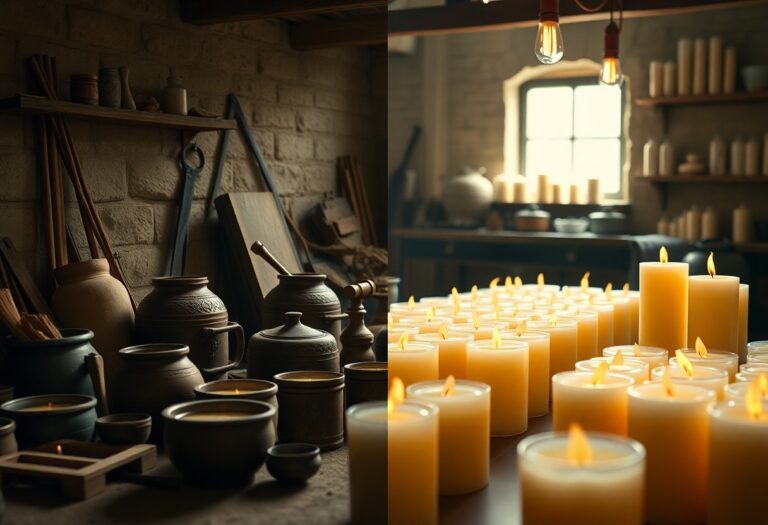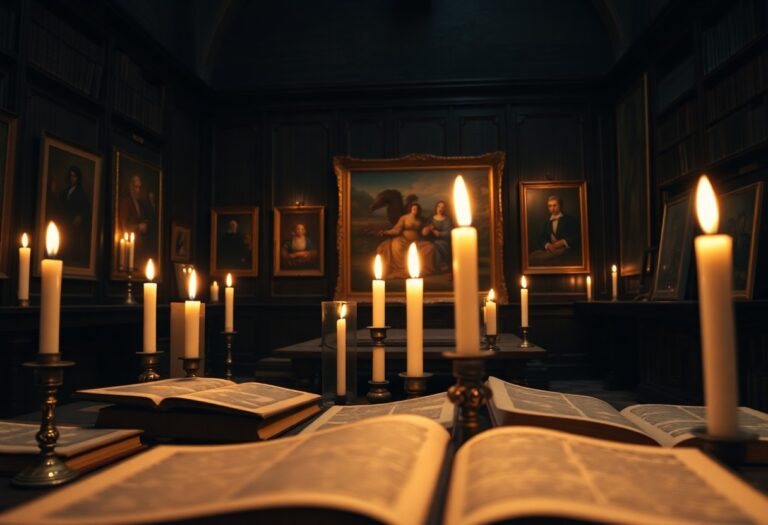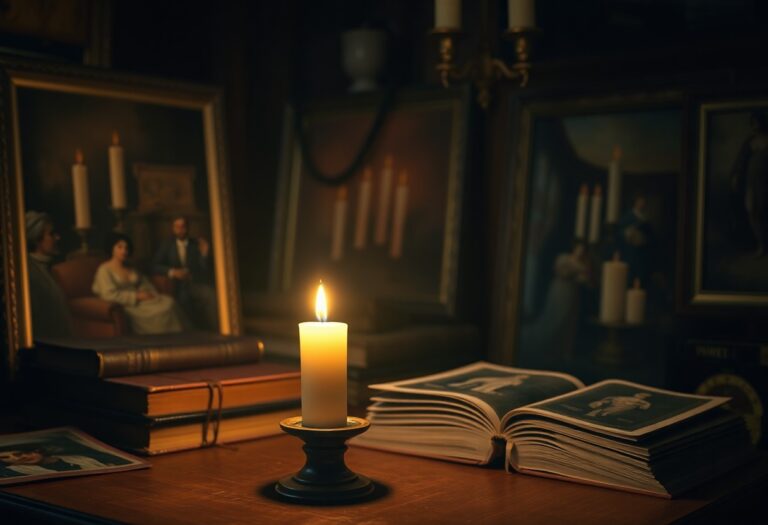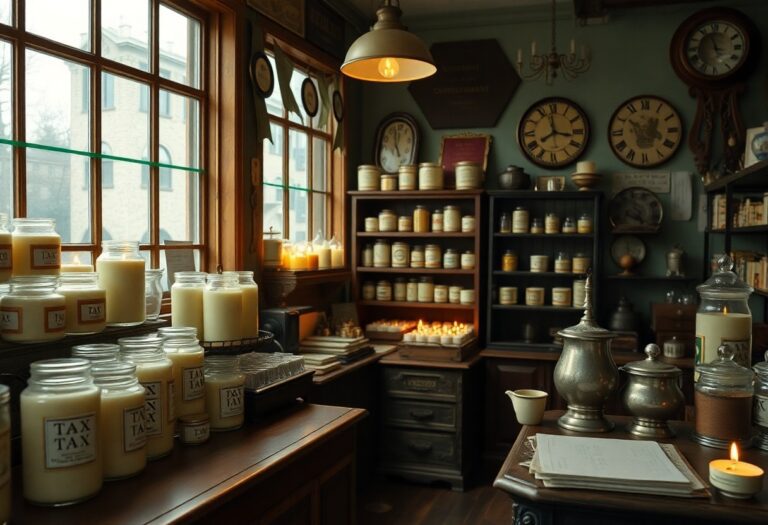Candlepower In Conflict – The Use Of Candles During War Times And Their Practicality
With the unpredictable nature of war, candles have served as imperative tools for soldiers and civilians alike, illuminating darkened landscapes and offering a sense of normalcy amidst chaos. Your understanding of their practicality in survival hinges on how these humble items provided light, warmth, and even morale in times of conflict. From providing a flickering beacon in trenches to serving as a source of comfort during air raids, candles illuminate not just spaces but also the resilience of humanity in tumultuous times. Explore the multifaceted roles candles played and how they adapted to the harsh realities of war.
The Historical Context of Candles in Warfare
While you might think of candles primarily as a source of light or ambiance today, their role in warfare has a rich historical context. Throughout various conflicts, candles have served multiple purposes ranging from practical illumination to playing a pivotal role in morale boosting among troops. During times when electricity was not available, these simple wax creations became indispensable for military operations, allowing soldiers to maintain routines and communicate during the dark hours. As you explore further, it’s fascinating to consider how such a humble item could impact the course of battles and the experiences of those who fought them.
While the practical uses of candles in combat are well-documented, their symbolic significance cannot be overlooked. Candles have often been used as metaphors for persistence and resilience in the face of adversity. They not only light the darkness but also represent the unwavering spirit of soldiers and civilians alike during prolonged periods of conflict. Understanding this duality enhances your appreciation of candles’ role and their place in historical narratives of warfare.
Early Uses of Candles in Military Operations
Candles were utilized extensively in military operations long before the advent of electric lighting. During battles, you would find soldiers relying on candles to illuminate their strategies and maintain communication through maps and written orders, especially at night or in poorly lit conditions. These sources of light provided necessary visibility in command tents and formations, influencing crucial decisions on the battlefield. Candle-making became an art form during wartime, ensuring that troops had access to reliable lighting when needed most, effectively prolonging operational hours.
Moreover, candles were also used in the rituals and ceremonies that often accompanied military life. From commemorate services for fallen soldiers to lighting candles for good fortune before battles, they played an integral part in establishing a collective identity among troops. With each flicker of the candlelight, you can almost sense the camaraderie and spirit that resided within the ranks, fortifying their resolve through difficult times.
Candles as Symbols of Hope and Resistance
One of the most profound aspects of candles is their role as symbols of hope and resistance in times of war. They have often represented the enduring spirit of communities facing adversity and conflict, acting as beacons of light amidst overwhelming darkness. The act of lighting a candle can signify not only remembrance for those lost but also a collective stand against oppression and turmoil. In various contexts, from local uprisings to global conflicts, candles have been lit as visible reminders of a shared belief in freedom and the persistence of the human spirit.
Plus, in situations where conventional means of resistance were limited, the candle became a powerful emblem of unity and defiance. For you as the observer, witnessing lit candles in protest or solidarity can draw attention to a cause and evoke a sense of community. The simple act of lighting a candle allows individuals to transcend their personal struggles, signaling to others that they will not be extinguished by the forces aligned against them, thus maintaining hope in the darkest of times.
The Practical Aspects of Candle Use
Illumination in the Absence of Electricity
On the battlefield, you may find yourself in complete darkness, especially during nighttime operations or in the chaos of an unexpected blackout. Candles provide an effective and portable source of light in these moments. When traditional electric lighting is unavailable or compromised, a simple candle can illuminate your surroundings, allowing you to navigate safely, read maps, or carry out critical tasks without losing visibility. With minimal supplies and the ability to make use of readily available materials, candles can become an irreplaceable tool for maintaining situational awareness during periods of darkness.
In addition to being a light source, the flickering flame of a candle can also have a psychological effect, offering a sense of comfort and normalcy in tumultuous times. You might find that a lit candle serves not only as a beacon in the dark but also as a reminder of home, evoking feelings of warmth and hope in an otherwise grim environment.
Candles as a Source of Heat and Cooking
An often-overlooked practicality of candles is their ability to provide both heat and a means for cooking in dire circumstances. When you’re cut off from conventional heating methods or cooking appliances, the steady flame of a candle can substitute as a modest heat source. To optimize this, you can use a pot or metal container placed above the candle to boil water or warm up rations. This technique can offer a warm meal when resources are sparse, making a significant difference to morale and health during trying times.
It is important to acknowledge, however, that using candles for heat or cooking presents certain risks. The open flame can lead to accidental fires if not monitored closely, especially in enclosed spaces or among highly flammable materials. Proper placement and safety measures become vital to prevent dangerous situations. Additionally, the efficiency of candles as a heat source is limited, so they should ideally complement other methods rather than act as a sole means of generating warmth or cooking food. Nevertheless, understanding how to harness the capabilities of candles can prove invaluable in the unpredictable circumstances of war.
Psychological Impacts of Candles during Conflict
Clearly, the use of candles during war times goes beyond mere functionality; it serves as a beacon of hope and resilience amidst chaos. During conflicts, the soft glow of candlelight can provide a comforting atmosphere that can uplift spirits. In moments of darkness, both metaphorical and literal, lighting a candle often symbolizes a refusal to succumb to despair. This powerful act transforms a bleak environment into one filled with possibility, allowing troops and civilians alike to feel a sense of normalcy and humanity. As you explore deeper into the significance of candlelight, you may also come across remarkable innovations like An 800 million candlepower carbon arc military searchlight, which showcases how light can be harnessed both practically and symbolically during conflicts.
Morale Boosting through Light
Morale is a critical factor in any conflict, and the presence of light can significantly enhance the spirits of those involved. Whether it’s soldiers stationed on the frontline or families enduring the strains of war, the warmth emanating from a candle can act as a reminder of hope and community. When united by candlelight during dark times, individuals can find motivation and strength in shared experiences, helping to foster resilience that is important for overcoming adversity.
The Significance of Candlelight Rituals
Candles have long been intertwined with rituals that provide spiritual comfort and connection. In times of conflict, these rituals often take on heightened importance as they create a sense of togetherness and shared purpose. Lighting candles can represent remembrance for those lost, gratitude for safety, or hope for peace, allowing you and your community to engage in a collective act that emphasizes solidarity. Such activities not only soothe anxieties but also help reinforce the cultural ties that bind individuals, resulting in a powerful way to maintain morale when faced with hardships.
Also, candlelight rituals provide an important moment of reflection and strength for you and your loved ones. These rituals offer an opportunity to pause amidst the chaos, facilitating healing and supporting emotional health. Beyond providing light, these activities instill a sense of control and agency, reminding you that even in the face of danger, there are meaningful ways to honor life, love, and hope. By participating in candlelight rituals, you tap into a historical lineage of resistance and resilience, highlighting the positive impacts of this simple yet profound act in turbulent times.
Candles in Different Conflicts
Keep in mind that the use of candles during various war times has varied significantly, shaped by the specific needs and challenges of each conflict. The simplicity and portability of candles made them a go-to source of light in situations where modern conveniences like Gas and Electricity were either unavailable or too dangerous to use. Many soldiers carried candles in their packs, understanding their value beyond just illumination—they functioned as comfort and morale boosters in the bleakest of circumstances.
World War I and II
About the world wars, candles played an vital role on the home front and the battlefield alike. In the trenches of World War I, candles provided soldiers with much-needed light during evenings. They were cheap and easily transportable, providing a reliable source of illumination for various tasks, from writing letters home to navigating through darkened environments. Furthermore, their soft glow offered a small semblance of normalcy amidst the chaos of war.
As for World War II, the strategic target of bombings led to widespread blackouts in cities, making candles invaluable for civilians and military alike. They were often the only source of light during air raids when electricity was cut off. Candles helped families maintain routines, allowing them to gather for meals or share moments of togetherness, reinforcing the spirit of resilience during tough times.
Modern Conflicts and Candle Usage
Any assessment of modern conflicts reveals an ongoing reliance on candles, especially when electricity supply is disrupted due to warfare. In regions affected by civil unrest or military actions, you may find citizens turning to candles for light when infrastructure is compromised. These small, affordable items can make a significant difference in your daily life during emergencies.
Modern activities related to conflict often come with the risk of power shortages or attacks on electrical grids, making candles a reliable alternative. Candles not only provide light but also can serve as a safety source for warmth when access to resources is limited. Moreover, they can be utilized for signaling in survival situations where communication methods fail. The positive aspects of candles during such dire circumstances—namely, their efficiency, simplicity, and multifunctionality—ensure they remain a practical choice for light and heat across various modern conflicts.
The Challenges and Limitations of Candles
Unlike modern lighting methods, candles come with a variety of challenges and limitations that impact their practicality in wartime. You may find that while candles can provide light, they do so with a barely manageable flicker, which can affect visibility and create a less than ideal environment for tasks requiring precision. Additionally, the burn time of a candle is limited, meaning that while they may be portable and easy to carry, the duration of their usefulness is always in question. This becomes particularly challenging when you consider the demands of military operations, where extended periods of illumination are often necessary for successful missions.
Safety Concerns in Military Settings
Military personnel face numerous safety challenges when using candles in field operations. Open flames pose a significant risk, especially in environments where flammable materials are prevalent. You could find that even a small breeze might carry the flame into nearby materials, leading to potential fires that could threaten not just your safety, but also that of your entire unit. On top of that, the potential for burns or accidental tipping over of candles can create hazardous situations, undermining the focus and effectiveness of missions.
Environmental Considerations
Beside the immediate safety concerns, the environmental impact of using candles in combat zones cannot be ignored. Candles typically produce smoke and soot, which may contaminate the air and environment. When you light a candle in a confined space, you might inadvertently create a buildup of harmful substances that could compromise your breathing and overall health. This environmental degradation could also have longer-term effects on the area where you are operating, making it more challenging for future troop movements or missions.
In fact, the materials used in candles, such as paraffin wax, release toxic substances during combustion, which can adversely affect local ecosystems. With numerous military operations taking place in sensitive areas, it’s crucial to recognize that your choice of lighting source can contribute to environmental degradation. The smoke and soot contribute to air pollution, while the potential for melting wax to stain or damage the ground adds further complications. Therefore, while candles may seem like a practical option for light, the multiple layers of environmental concerns illustrate why alternatives might be more favorable in military settings.
Innovations in Candle Technology for Warfare
After examining the historical background of candles in military contexts, it is necessary to explore into the innovations that have transformed their efficiency and safety. As wars progressed and the need for sustained illumination grew, scientists and manufacturers began to experiment with advanced materials and techniques. These innovations aimed at creating candles that not only burn longer but also reduce risks associated with traditional wax candles. You might find it fascinating that new compounds were introduced, improving the consistency of the burn, and allowing for a reliable source of light that was vital during nighttime operations.
Development of Safer Candles
Development of safer candles became a priority particularly with the increased risks of fire hazards in confined or volatile environments. Innovations such as the use of fire-retardant materials and unique glass encasements have made these candles less likely to tip over, thus minimizing potential accidents. You should consider how the integration of these materials has led to a significant reduction in injuries and property damage, providing soldiers and civilians alike with a sense of security while navigating through warfare zones.
Alternative Lighting Solutions
At the forefront of innovation, the military also explored alternative lighting solutions that could augment or replace traditional candles. The introduction of LED technology and battery-operated lights provided an efficient means of illumination without the inherent risks of open flames. You may appreciate that these alternatives not only offer increased durability and extended use but also present a lower profile, making them less detectable in combat situations.
The shift towards these alternative lighting solutions has opened up numerous opportunities for enhancing your operational effectiveness in warfare. Portable, rechargeable lights and advanced light-emitting technologies can provide you with a reliable source of illumination even in the most adverse conditions, ensuring that your unit remains discreet and adaptable. By embracing these advancements, soldiers are better equipped to perform their duties while greatly reducing the threats associated with traditional lighting methods.
Final Words
With these considerations, you can appreciate the significant role that candles played during wartime. Not merely a source of light, they were necessary for visibility during night operations, providing soldiers with a means to navigate and conduct activities in darkness. The practicality of candles extends beyond their illuminative ability; they were relatively easy to produce and transport, making them a reliable resource in the chaos of war. By understanding these dimensions, you can gain insight into how simple tools can have a profound impact on strategy and morale in military settings.
In looking back at the use of candles in conflict, you see how they symbolize resilience and adaptability in the face of adversity. Their availability and versatility meant that, even during the most challenging times, soldiers could harness basic elements to meet their needs. As you think about the various tools employed in history, you can recognize that something as simplistic as a candle can offer significant advantages, demonstrating the importance of innovation and resourcefulness in adverse conditions. Those who wielded the humble candle not only lit their immediate surroundings but also contributed to broader efforts that shaped the outcomes of conflicts.
FAQ
Q: What role did candles play in military operations during wartime?
A: Candles served multiple purposes in military operations. Firstly, they provided important light in the absence of electricity, especially in tents or makeshift camps. Soldiers used candles for reading maps, writing letters, or performing tasks during the night. Additionally, candles could be used as a signal for communication in the darkness, aiding coordination among troops. Their ease of transport and low cost made them a practical choice for light sources in various conflict settings.
Q: How did the availability of candles impact soldiers’ morale in combat situations?
A: The availability of candles positively impacted soldiers’ morale by providing a sense of normalcy and comfort in chaotic environments. Candles were often associated with home and tradition, allowing soldiers to create a small, familiar atmosphere amid the harsh realities of war. The soft light from candles could also have a calming effect during tense moments, fostering a sense of community and camaraderie when used in group activities, such as gathering for a meal or sharing stories.
Q: What kinds of candles were used during wartime, and how did their design differ from everyday candles?
A: Wartime candles were often designed to be more durable and functional than typical everyday candles. Military candles were usually made from materials that could withstand harsh conditions, such as wind and rain. They often came in larger sizes or were designed to burn for extended periods without needing replacement. Some military-grade candles also featured specific designs to reduce soot production or to provide a minimal smokeless flame, which was important for maintaining stealth during operations.

